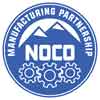If you’ve ever bought a pre-packaged wall-hanging kit or a set of L-shaped shelf mounts from a hardware chain like The Home Depot or Lowe’s, you’ve purchased a product that’s undergone precision metal stamping. Most people never think about how many of our most common product purchases were produced by precision metal stamping.
Metal stamping is integral to the production of millions of items from home products to industrial items to heavy machinery. In this blog, we explain the processes behind this manufacturing staple.

What is metal stamping?
To give a definition in layman’s terms that anyone can understand, metal stamping is a cold-forming process that applies extreme force to create a permanently shaped piece of metal. Involved in the process are large tool and dies that are fed into a press that rapidly applies tons of force to cut and shape the metal into the specified objects.
Tool (and Dies) of the Trade
Precision metal stamping requires heavy machinery (“presses”) and a combination of custom tool and dies to fabricate jobs that meet a product’s precise specifications. Here’s an easy to understand description of each component:
Creating Metal Stamped Parts
The presses that exert the extreme force necessary to create these parts come in a diverse range of power. In fact, Metalcraft owns the largest press for hire machine in Colorado—capable of applying up to 400 tons of force, as well as tool and die sizes up to 54” x 108”
Tool and Dies
In metal stamping services, a tool is referred to as any mechanical device used to cut, shape, support, or mold metals. Jigs, fixtures, drills, and cutting blades all count as tools. Metalcraft has in-house toolmakers capable of adapting existing tools or building new ones.
Dies, by definition, only include tools that alter the shape of the metal in a functional way.
Metal Stamping Techniques
Depending on the size, scope, and output requiring precision metal stamping services, orders are completed using two kinds of techniques. These are:
Short-Run Die Stamping
Typically reserved for smaller, simpler metal stamping jobs, short-run stamping requires one custom tool for each operation. Examples include piercing, forming, drawing and trimming.
Long-Run Progressive Die Stamping
This technique relies on multiple die stations within one progressive die, each of which has its own function in a progressive process that culminates in the final, finished part. Using this technique creates process efficiencies that result in faster production speeds and cost-effective manufacturing.
Metalcraft – Denver’s Metal Stamping Experts
With over seven decades of precise fabrication experience, we believe that metal stamping is an art form. Our wheelhouse project in our stamping department is high-volume with repeatable product output. However, we’re also capable of running production for prototype and lower-volume products in our precision sheet metal departments. Our approach to every precision metal stamping order is to assess each and every job from a turnkey perspective. We address the production process from start to finish, with a goal of delivering the highest quality output at the most efficient price-point.
We hope you now have a better understanding of metal stamping and the tools and techniques applied to create custom fabricated products–many of which are part of our everyday lives. Like picture hanging kits. If your company requires a project that could benefit from precision metal stamping, contact us today to get started.






